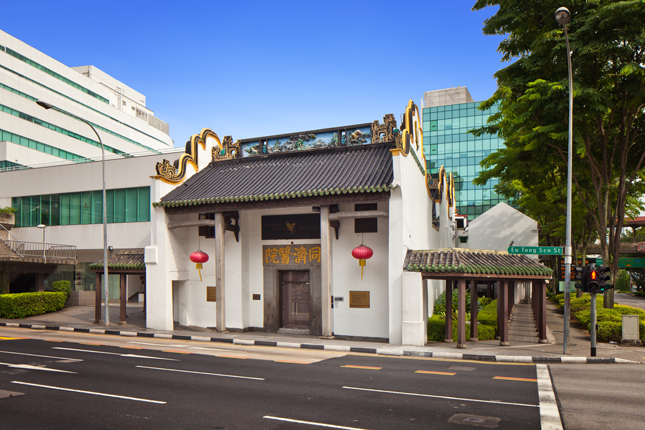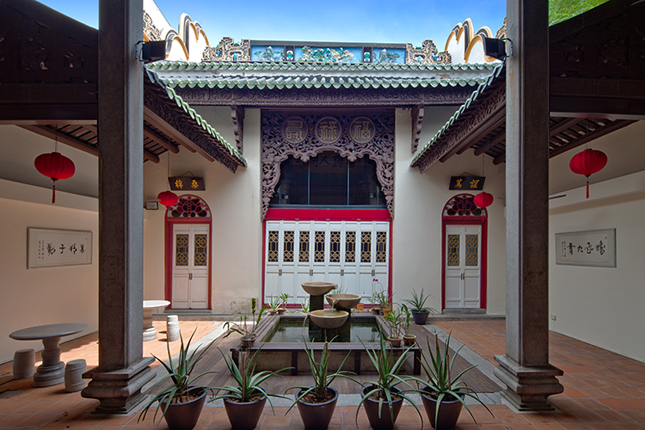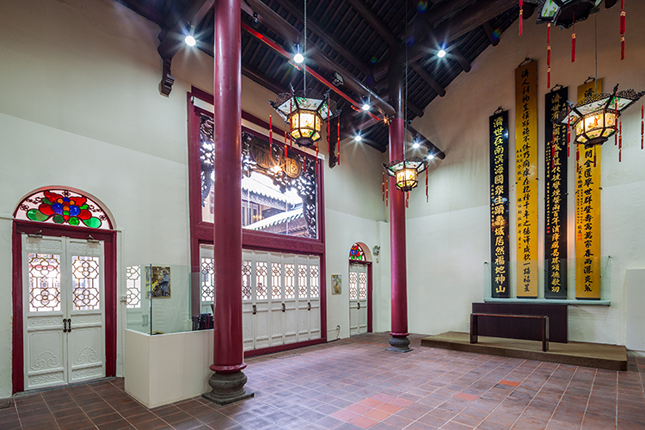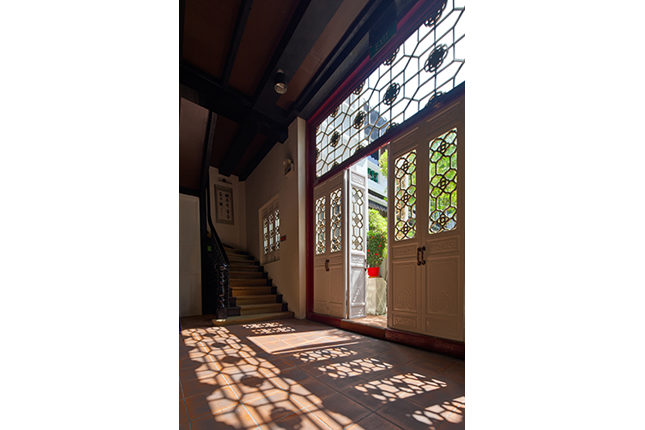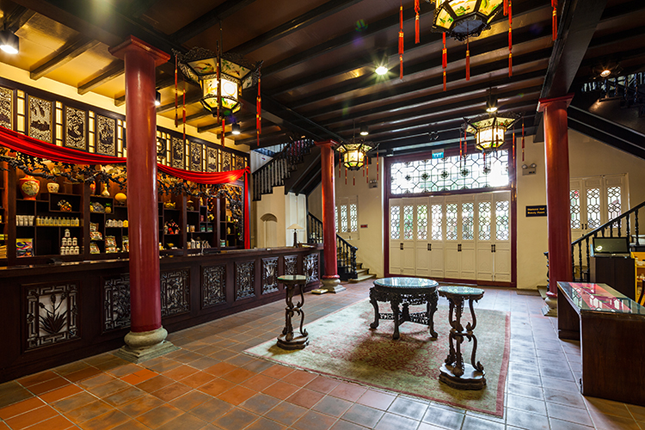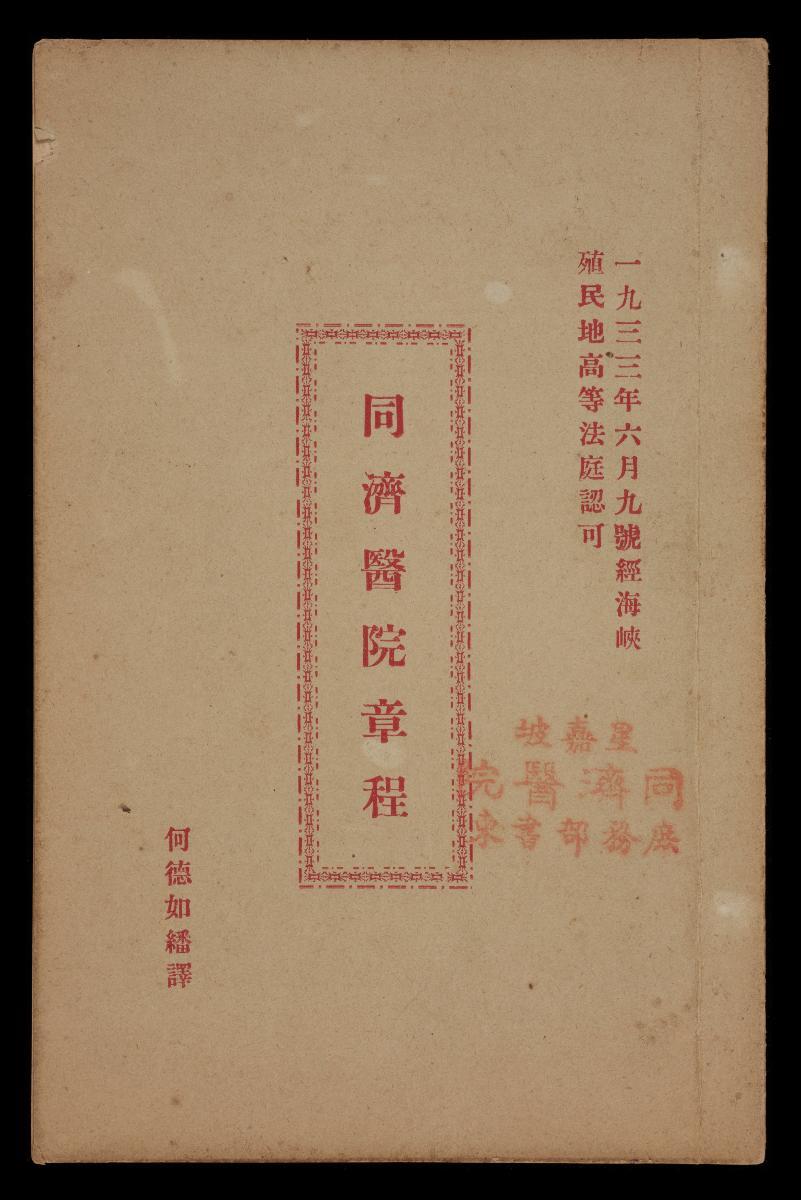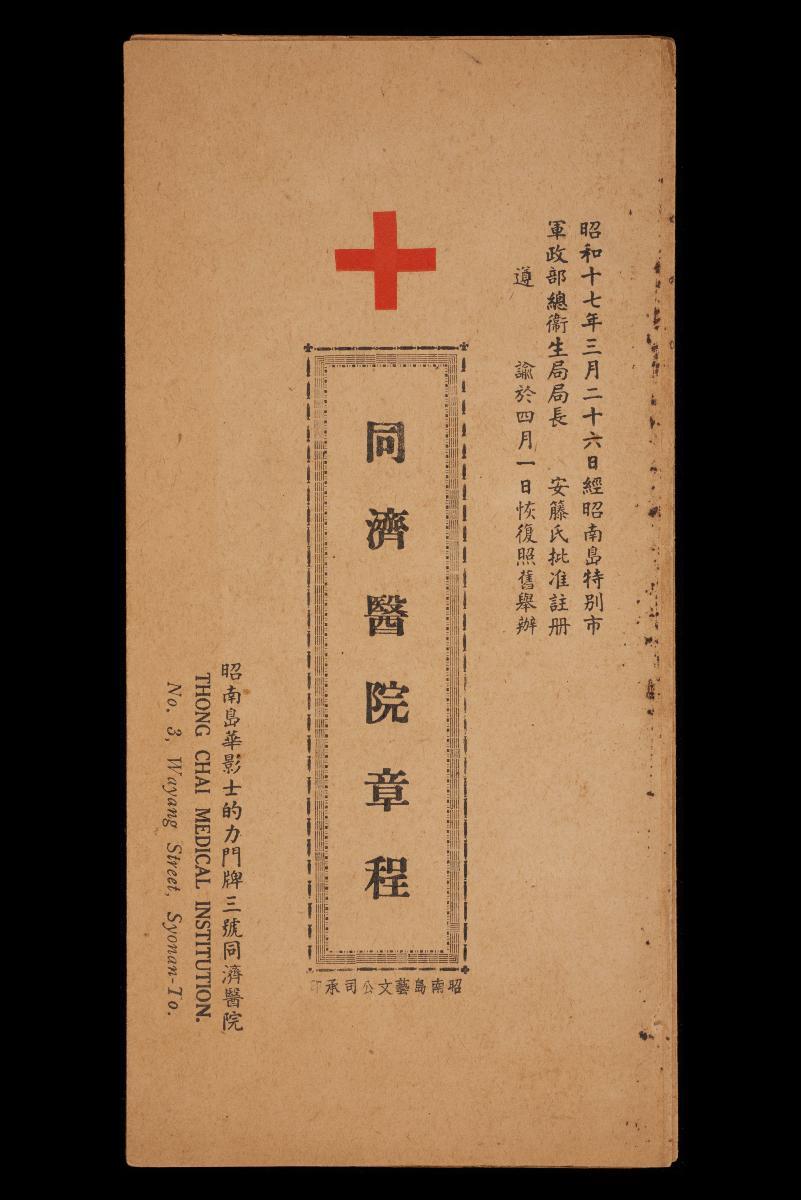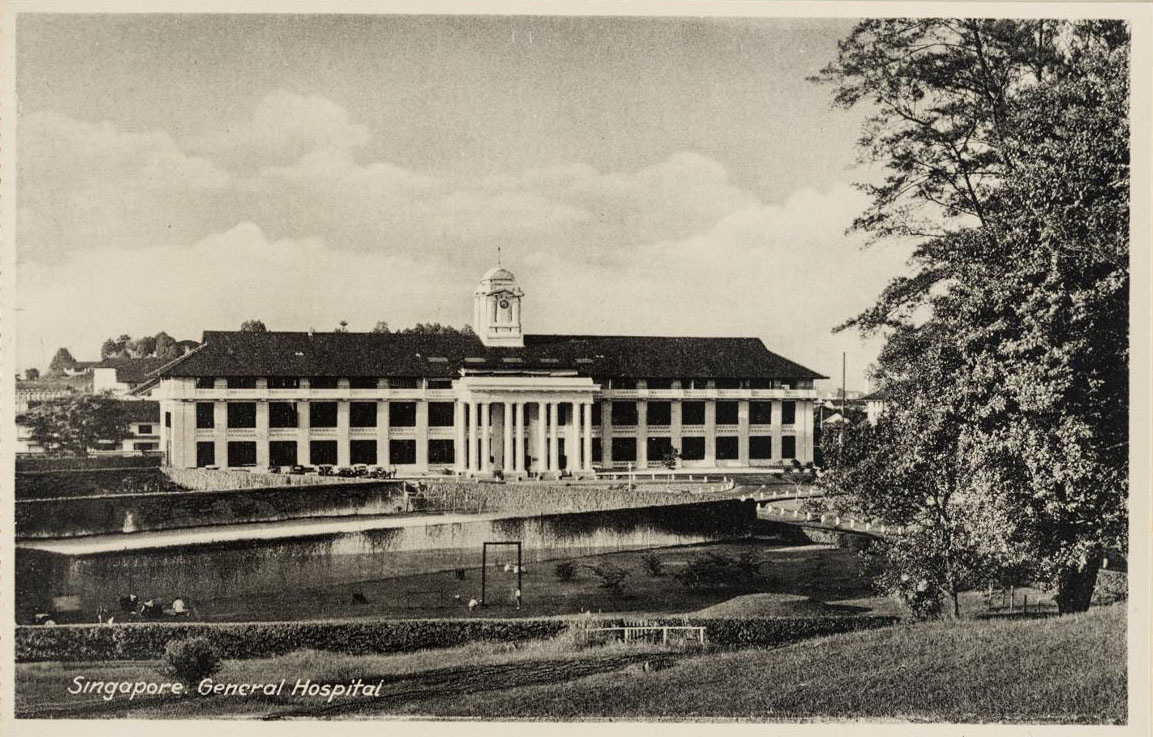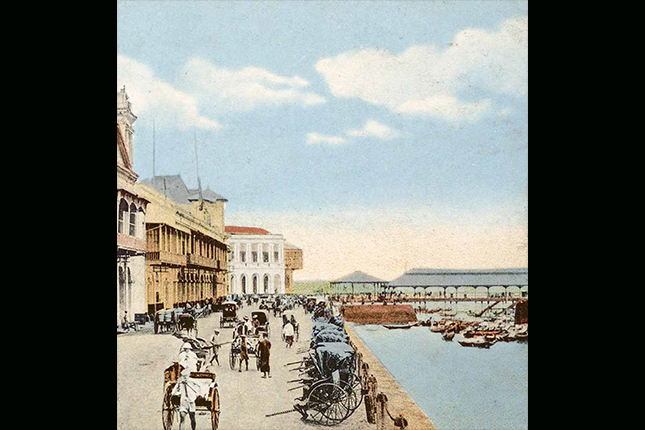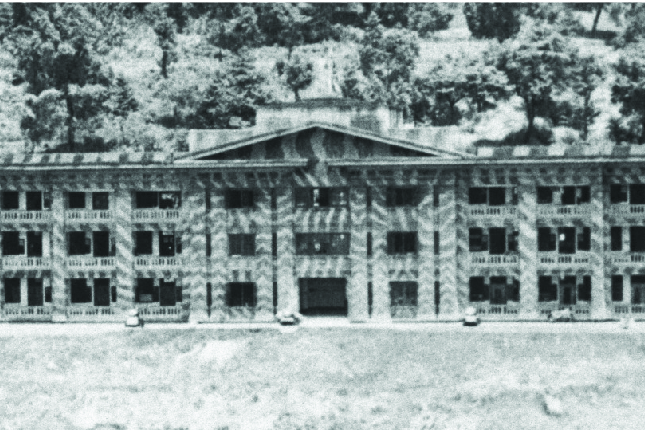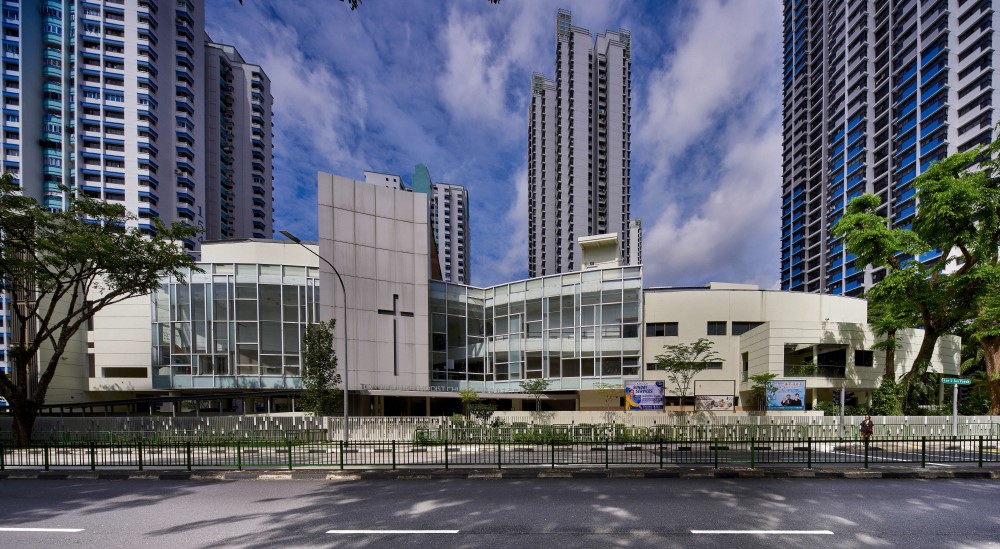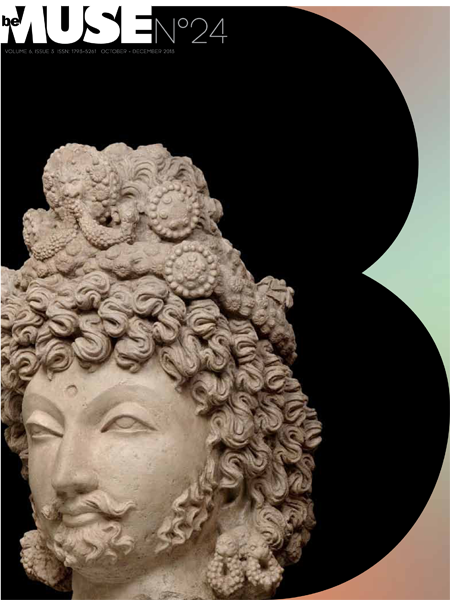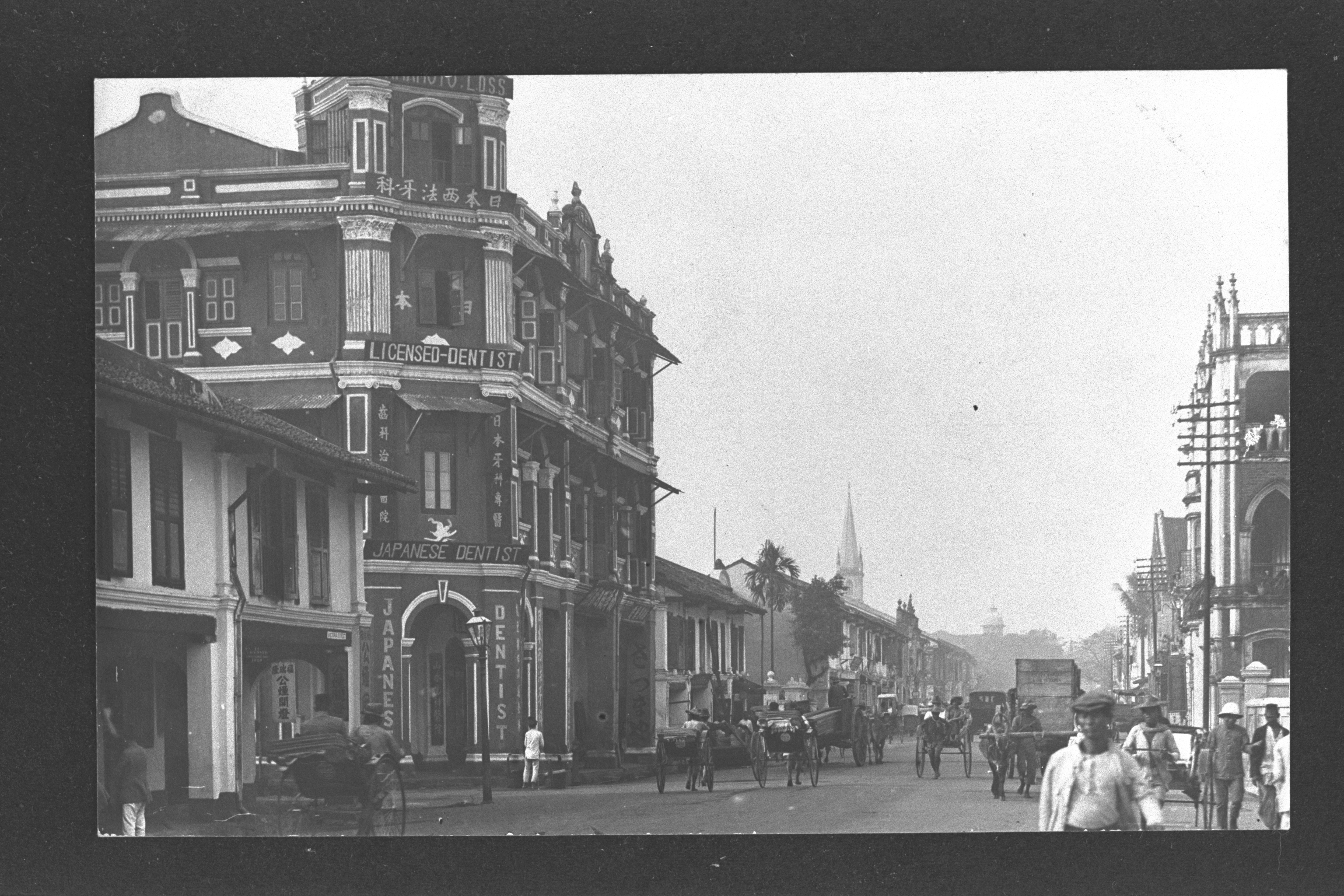Home to the first free traditional Chinese medical clinic for the poor in Singapore, the Former Thong Chai Medical Institution testifies to the Chinese pioneers’ spirit of mutual assistance and their generosity towards the poor and needy. Apart from being a medical facility, the building also housed various Chinese guilds and served as the headquarters of the Singapore Chinese Chamber of Commerce (today’s Singapore Chinese Chamber of Commerce and Industry) when it was first established.
Foundation of the Medical Institution
Seven Chinese merchants founded Thong Chai Medical Institution in 1867 in a shophouse on Upper Pickering Street. It was initially called Thong Chai Yee Say (同济医社, ‘Thong Chai Medical Society’). The name ‘Thong Chai’ is derived from the Cantonese pronunciation of two Chinese characters: tong (同, ‘universal’) and ji (济, ‘relief’). They reflect the institution’s objective of providing free diagnosis and herbal medicine to all people, regardless of race, religion, and social status.
Upon learning about Thong Chai Medical Society’s charitable mission, Governor of the Straits Settlements Sir Cecil Clementi Smith granted the institution the land parcel on which the building now stands. Construction of the new Thong Chai building began in 1891 with funds from public subscriptions and generous donations from individuals. One of the main donors was Gan Eng Seng (颜永成), the Malacca-born Hokkien philanthropist and businessman who was also the trustee of the Thong Chai estate at that time. When the building was completed and officially opened a year later in 1892, Thong Chai Yee Say was renamed Thong Chai Medical Institution (同济医院).
Meeting Hall
Besides being a medical facility, the Former Thong Chai Medical Institution also functioned as a venue for guild and political gatherings. In 1906, a group of Chinese merchants founded the Singapore Chinese Chamber of Commerce within the building. The organisation held their meetings in the building until it moved into the former residence of Wee Ah Hood (黄亚佛), a wealthy Teochew merchant, on Hill Street. Presently, the Singapore Chinese Chamber of Commerce and Industry building stands in place of the residence.
Nanyang Volunteers
When the Second Sino-Japanese War broke out in 1937, well known Hokkien businessman and philanthropist Tan Kah Kee (陈嘉庚) – who founded The Chinese High School – established the China Relief Fund to aid the Chinese war efforts against the Japanese. In 1939, the Committee of the China Relief Fund issued its first recruitment notice in local Chinese newspapers for experienced mechanics and drivers to help transport war supplies to China via the Burma Road. While most of the volunteers, who came to be known as the Nanyang Volunteers, were Chinese men, there were also some Malay and Indian men, and even a few Chinese women. A training centre was set up within the estate of Lian Shan Shuang Lin Monastery. The first batches of the Nanyang Volunteers were housed in Thong Chai Medical Institution, which also became an administration centre for the volunteers.
Architecture and Furnishings
Designed in the traditional Cantonese style, the Former Thong Chai Medical Institution is one of the few surviving examples of secular Cantonese architecture in Singapore. The straight, ornamented roof ridge, coupled with the gable-end walls shaped like Chinese wok handles, is typical of Cantonese buildings. Within the compound are three courtyards. This elongated plan, also common in urban residences in Guangdong Province, China, is aptly referred to as ‘bamboo house’ (竹筒屋) by the Cantonese.
Facing the front courtyard is an elaborate pierced-relief carving on giltwood which hangs from the roof. It depicts the an ba xian (暗八仙, ‘Treasures of the Eight Immortals’), or weapons wielded by the Taoist Eight Immortals. They are believed to possess powers to ward off evil and attract good fortune. Calligraphic inscriptions that describe the charitable deeds of Thong Chai Medical Institution and those of the early Chinese community in Singapore are proudly displayed in the high-ceilinged main hall where patients had their consultations. The first characters of each pair of matching couplets form the name of the institution: tong and ji. In the past, the rear hall housed the dispensary, and herbs were laid out to dry in the rear courtyard.
Thong Chai Medical Institution Today
Thong Chai Medical Institution operated within the building until 1979. It then moved to new premises on Chin Swee Road, where it has continued to provide free traditional Chinese healthcare to people from all walks of life until the present day.
Our National Monuments
Our National Monuments are an integral part of Singapore’s built heritage, which the National Heritage Board (NHB) preserves and promotes for posterity. They are monuments and sites that are accorded the highest level of protection in Singapore.




